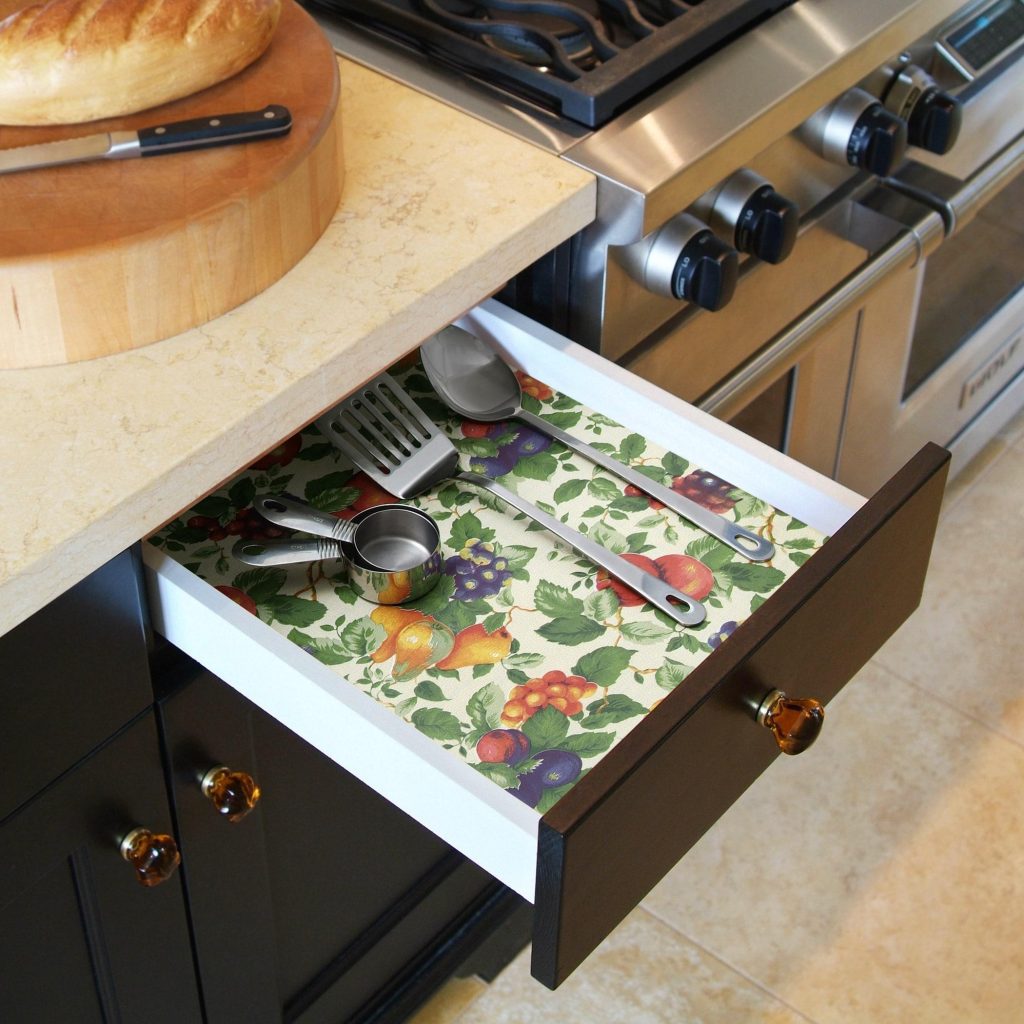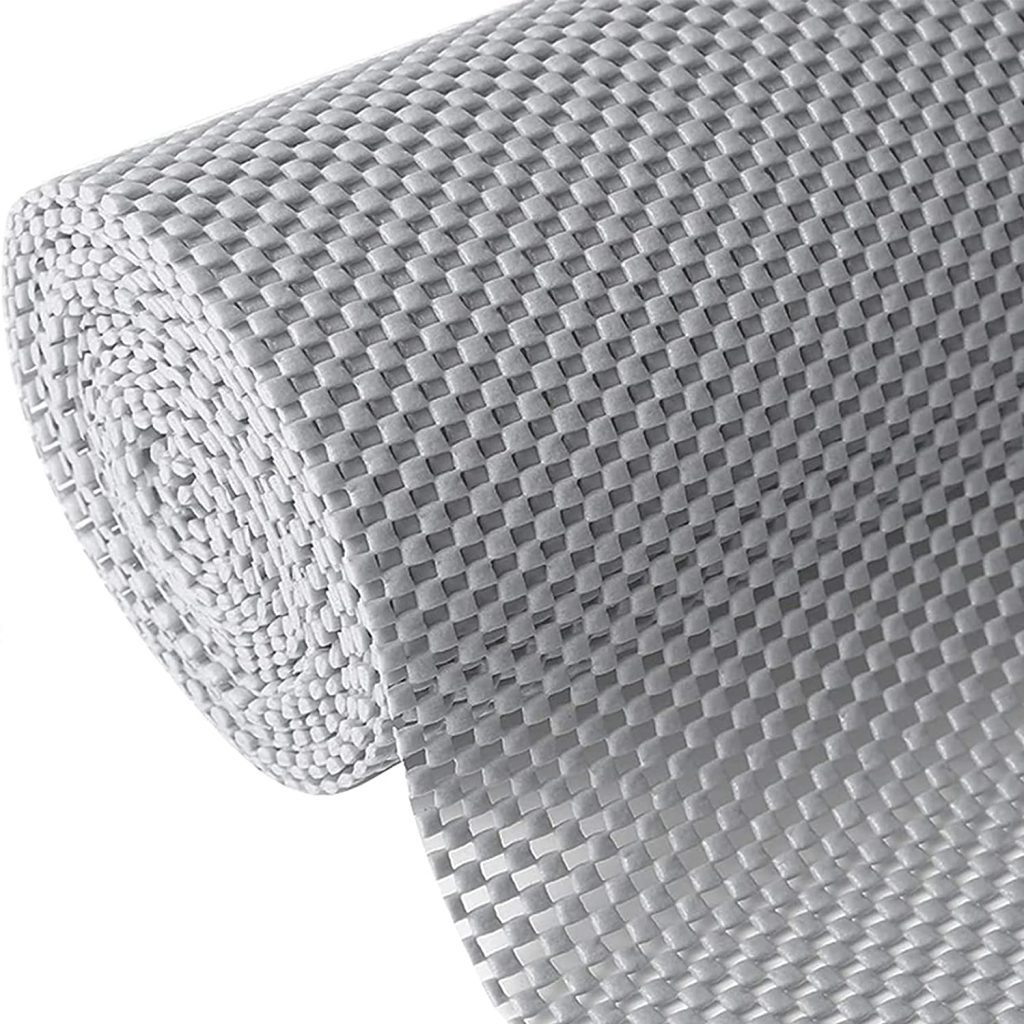Kitchen cabinets get their fair share of spills, leaks, and wear and tear from everyday use. If not maintained and cleaned regularly, this seemingly small issue can lead to more serious problems. Not only will it affect the aesthetics of your kitchen but may even cause mildew and mold to grow, which can be hazardous to health.
Caring for the outdoor surfaces of your kitchen cabinet is easy as you can simply wipe them clean with a mild detergent; it is the insides that collect a lot of grime and grease over time. So, how to go about cleaning them?
Here’s everything you need to know about keeping your kitchen cabinet shelves clean and maintaining them.
Shelf Liners for Protecting Kitchen Cabinet Shelves
Precaution is always better than cure. So, it’s a good idea to protect the kitchen cabinets shelves in the first place to prevent too much dirt and dust from settling on them rather than spending time cleaning them.

Shelf lining is one such easy and convenient precautionary solution. This age-old habit continues to be one of the most useful hacks for protecting your kitchen cabinet shelf.
Advantages of Using Kitchen Liners
1. Moisture Protection
When it comes to protecting furniture, moisture is our greatest enemy. Given your kitchen cabinets are located in the kitchen, eliminating moisture is almost impossible. And besides, how many of us are guilty of emptying the dishwasher with the not-so-dried dishes directly into the cabinets?
With kitchen liners, you can upgrade your kitchen to keep up with your busy lifestyle. Liners made of plastic or other water-resistant material, in particular, can help save the cabinet surfaces from water, oil, grease, etc. by forming a barrier between the two. This saves the cabinets from dirt and grime and keeps them in a good condition.
2. Scratch Protection
Kitchenware like knives and forks have pointy ends that pose a risk of scratching the cabinet surfaces. Heavy pots and pans can also leave ring marks on the cabinet floor. Moreover, moving these heavy utensils can lead to scrapes and nicks on the surfaces.
With a shelf liner, you do not have to worry about these scratches and scrapes damaging your kitchen shelves.
3. Clean off the Grime With Ease
Grime and grease are common in kitchen cabinets given that we store condiments, spices, and sauces in there. No matter how much you try, they find a way to sneak in. Shelf liners can help you protect the shelves and they are also very easy to clean and keep your kitchen clean.
4. Adds Fun and Color

You can find shelf liners in various design patterns and colors, making it a fun way to add some color to your kitchen space. It is an easy and cheap way of getting your kitchen “redecorated” every few years.
5. Reduces Noise
If you choose padded liners, you will also get the added advantage of reduced noise from the banging and clanging of kitchenware.
Types of Shelf Liners
Whether you have a brand new kitchen or just want to save your kitchen cabinets from further damage, kitchen liners are a great way of protecting them from collecting grease and grime.
Take a look at some of the many varieties of kitchen cabinet shelf liners to find one that would best suit your needs.
Stickiness
Shelf liners can be broadly classified into two categories based on stickiness — adhesive and non-adhesive.
Adhesive Liners

A major benefit of adhesive liners is that you do not have to worry about them shifting during use. They are also very durable and a cheaper option. However, installing them is quite difficult as you have to ensure there is no trapped air.
Non-adhesive Liners
Non-Adhesive liners are thicker and have a non-slip feature. They tend to be more costly. And as they are not completely attached, they can shift around.
Material
Vinyl
Available in a variety of colors and designs as well as adhesive and non-adhesive options, vinyl liners are one of the widely used liners. However, if you use self-adhesive vinyl liners, they can leave residue and can be a bit of a task to remove.
Plastic
Plastic is the best option if you want to waterproof an area from leaky pipes or other grease and spills. It’s best to opt for pre-cut plastic liners as they are difficult to cut.
Fabric
Available in a variety of designs and colors, fabric liners are mostly non-adhesive and machine washable. However, they are lightweight and can shift around a lot. You can opt for thicker material but that too will not be as stable as other materials.
Foam

Arguably the best option for cabinet shelves, foam liners are excellent for holding delicate items like glass tableware. They are mostly non-skid so you do not have to worry about them moving. However, they do have holes in which crumbs and dirt can get trapped.
Tips for Maintaining Your Shelf Liners
While shelf liners help keep your kitchen cabinets clean, there are also things you can do to keep your shelf liners clean and get the most out of them. Here are a few tips that will help you exploit their full potential.
Avoid the Sticky Stuff
While adhesive liners stay in one place and you do not have to worry about rearranging them every next day, the cheaper quality ones can be difficult to remove and may do more damage than good. Aggressively removing the liner may result in dents, dings, divots, and scratches.
Regularly Clean the Cabinets
Applying a liner does not mean you do not have to clean your kitchen cabinets. Clean your kitchen cabinet shelves regularly to avoid stains and other dirt. Clean, dry, and apply your shelf liners back. With regular cleaning, you will also be able to keep track of their quality and replace them in time.
Opt for the Padded Ones
Padded liners are more stable and can also reduce the inevitable noises of kitchenware clanging around in the cabinets. It also provides extra protection both for the kitchenware and the cabinets.
Line the Backs of Glass Cabinets
This tip is more to increase the overall look of the place. You can choose from a variety of colors and designs, so the wall liners peeking through your glass cabinets will give your kitchen a chic, trendy look.
Conclusion
Kitchen cabinets are prone to damage and are often a major kitchen fixture that undergoes a lot of wear and tear and gets damaged from spills, leaks, dirt, and grime. Thankfully, protecting your kitchen cabinet shelves is easy enough!
Using kitchen shelf liners and cleaning your cabinets regularly will help keep your cabinets in the best condition for a very long time.







